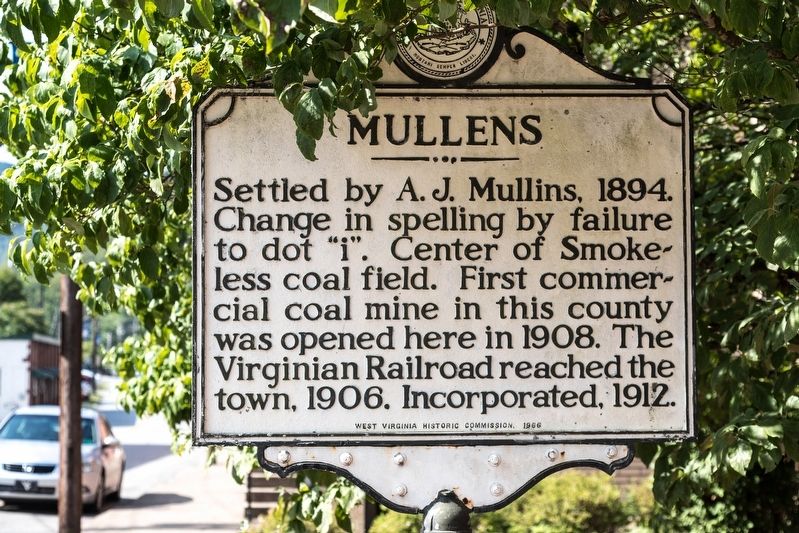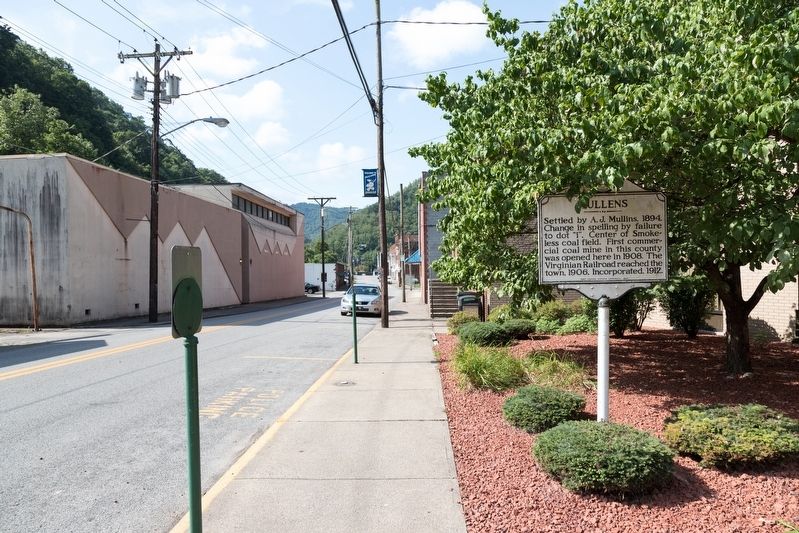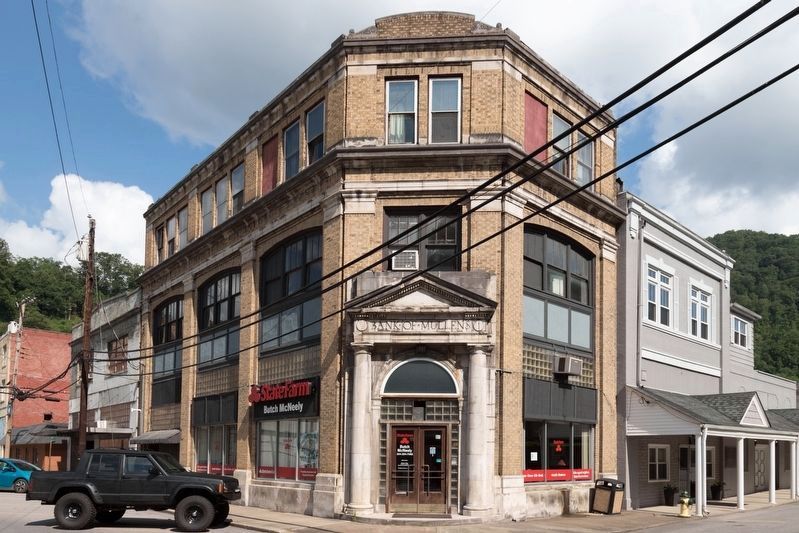Mullens in Wyoming County, West Virginia — The American South (Appalachia)
Mullens
Erected 1966 by West Virginia Historic Commission.
Topics and series. This historical marker is listed in these topic lists: Railroads & Streetcars • Settlements & Settlers. In addition, it is included in the West Virginia Archives and History series list. A significant historical year for this entry is 1894.
Location. 37° 35.088′ N, 81° 22.823′ W. Marker is in Mullens, West Virginia, in Wyoming County. Marker is at the intersection of Moran Avenue and 4th Street, on the left when traveling north on Moran Avenue. It is at the Mullens City Hall. Touch for map. Marker is at or near this postal address: 316 Moran Ave, Mullens WV 25882, United States of America. Touch for directions.
Other nearby markers. At least 8 other markers are within walking distance of this marker. Virginian Railway Station (approx. 0.2 miles away); Virginian Railway Motor Barn (approx. 0.2 miles away); a different marker also named Mullens (approx. 0.6 miles away); Itmann Company Store (approx. 0.6 miles away); Mullens Historic District (approx. 0.6 miles away); a different marker also named Mullens (approx. 0.6 miles away); The Richest Little Railroad in the World (approx. 0.6 miles away); The Virginian Arrives (approx. 0.6 miles away). Touch for a list and map of all markers in Mullens.
More about this marker. A copy of this marker can be found at Guyandotte Avenue and Dunman Street, on the west end of town.
Also see . . . Wikipedia entry. “The early growth of the Mullens community came with development of the lumber and coal mining industries. In the early 20th century, coal-mining manager and developer William Nelson Page of Ansted helped open the Winding Gulf Coalfield with plans for the Deepwater Railway, a new short-line railroad. When Page ran into competitive collusion by the bigger railroads which would have wrecked his project—backed by his silent partner, wealthy industrialist Henry Huttleston Rogers—the plan was expanded in a secretive and massive way to build a line all the way east to the port of Hampton Roads. Completed in 1909, the Virginian Railway (VGN) established engine terminal and yard facilities near Mullens which employed hundreds of workers during the first half of the 20th century. ” (Submitted on August 25, 2019, by J. J. Prats of Powell, Ohio.)
Credits. This page was last revised on June 9, 2020. It was originally submitted on August 25, 2019, by J. J. Prats of Powell, Ohio. This page has been viewed 163 times since then and 21 times this year. Photos: 1, 2, 3. submitted on August 25, 2019, by J. J. Prats of Powell, Ohio.


